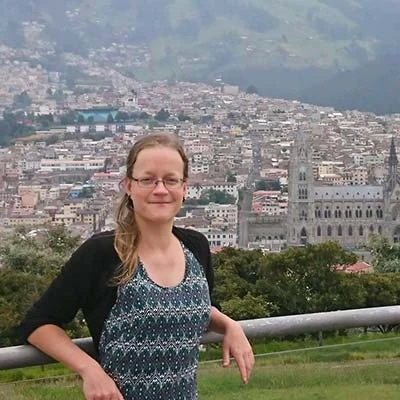
During my trip to Ecuador this year, one of my longer excursions took me to the rainforest region.
A few years ago in Puyo, I met Yaku, a guide who is a member of an indigenous community and lives with his family outside Puyo near Mirador Indichuris. I visit him regularly because there is a lot to discover and to experience in the area and his father, who doesn’t call himself a shaman but is very knowledgeable about the healing benefits of various plants, always has a lot to tell.
Community tourism near Puyo
After a night in Baños, I arrived in Puyo at midday and took the local bus from there to Pomona. I got off at the entrance to the Hola Vida waterfall, which I had explored on a previous visit. To get to the cabañas (“living huts”), two of which are also available to guests, you first have to walk about five minutes through the forest to reach the Rio Puyo river. With a bit of luck, you might spot little monkeys in the trees along the way. You are taken across the river in a canoe, which is not so easy after rainfall and strong currents. The canoe is poled, not rowed, which requires a lot of physical effort.
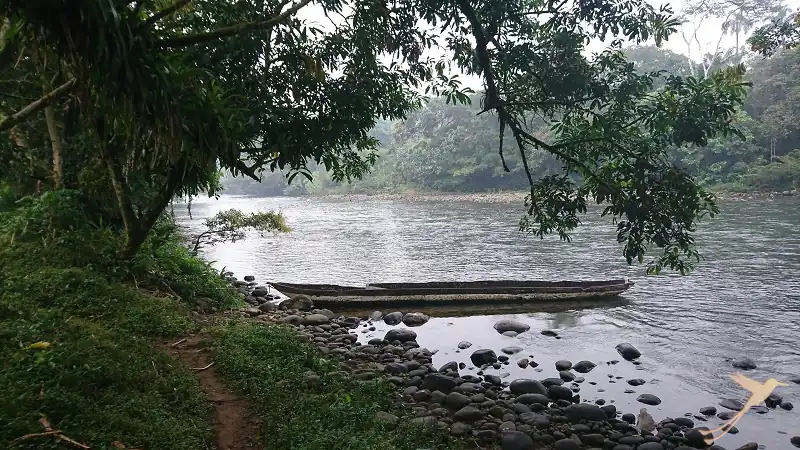
Right after my arrival, I was invited to go fishing. As a city person, I preferred to just watch, but it was quite interesting. A root that is poisonous to fish but harmless to humans is washed out in the river. This kills the fish within a few meters downstream. They then usually remain lying under stones, from where they can be collected. We spent the rest of the day relaxing near the huts and went to sleep early.
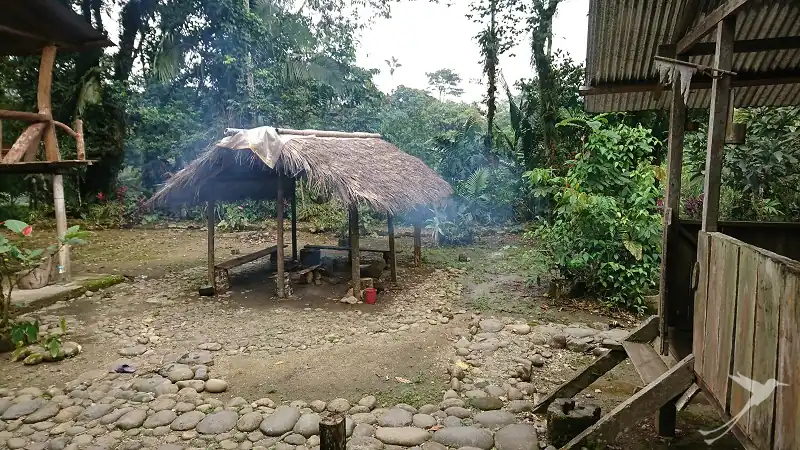
The next day we went on another excursion to neighboring huts, which are located on a small lake where you can also swim. This time we were traveling with one of Yaku’s cousins, who had friends visiting from near Quito. Community tourism (turismo comunitario) is mainly practiced in the area. Even though we turned up quite spontaneously, a delicious typical meal of plantains, rice, maito (fish wrapped in leaves) and yucca was prepared for us within a short space of time. The meal was accompanied by chuchuhuasa, a sugar cane liquor in which a bark has been preserved. This was not the only reason why we had a lot of fun.

Back at the cabañas of Yaku and his family, we sat around the campfire for a while and went to sleep early again. The next day we went on a hike through the forest, several hectares of which belong to some of Yaku’s siblings. His father was our guide and you could hardly tell he was almost 80 years old. He explained a lot about the different plants and wildlife in the area. We passed huge old trees and were able to enjoy the view through gaps in the thicket.
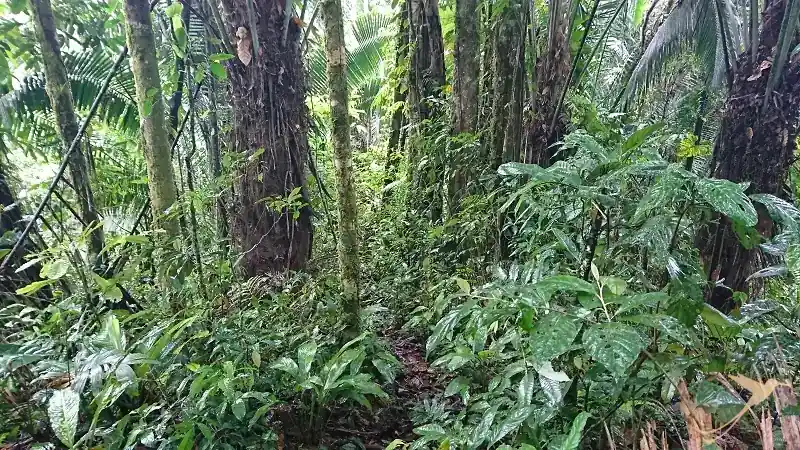
After a few hours of hiking, we arrived back at the huts in time for a heavy downpour and were looking forward to a late lunch. In the evening of the same day, I drove to the Puyo bus terminal in order to take the night bus to my next destination:
The Limoncocha lagoon
The journey was actually a little more complicated than I thought at first, as I had to change buses several times. For the beginning, it is definitely better to take a vehicle with a driver or join a guided tour directly. But even with public buses, at breakfast time, I finally arrived at Limoncocha which I actually only wanted to visit because of the lagoon. The town itself is more of a group of houses along the main road and the few side streets. There is a fairly new-looking park with a playground and small sports facilities.
Coincidentally, the restaurant where I had breakfast – one of very few in the village – belonged to a young man who also works as a guide in the Reserva Limoncocha. We agreed on two two-and-a-half hour tours: one around midday and one in the evening. After I had finished breakfast and put my things in the hostal room, I made my way to the entrance of the Reserva. There are a few information boards and administration buildings where every visitor registers. I was currently the only guest and so, together with the guide of course, I had the excursion boat to myself. After a short introduction and after I had put on my life jacket, we went down to the dock. The view over the lagoon with the lush green vegetation around it was truly spectacular.

We boarded the boat, which fortunately had a roof, as the sun can be quite strong on the open water. As we slowly cruised along the shore, Toni, my guide, kept pointing into the vegetation to draw my attention to various animals. This allowed me to observe many animals that I had otherwise only seen in pictures: Hoatzins, a water turtle some distance away, two species of monkeys as well as various herons and cranes.
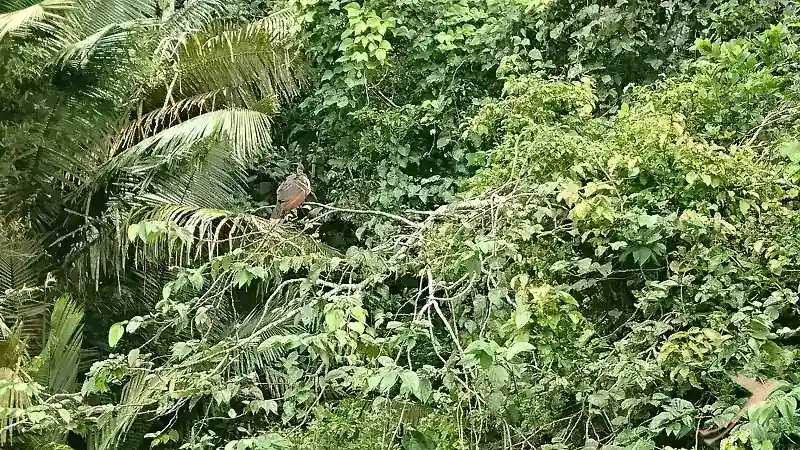
At one point, a flock of guacamayos (macaws) even flew over the trees. We were also able to watch a woman, who belongs to an indigenous community living in a village behind the lake, fishing for piranha.

After about an hour, we took the boat into a kind of canal. This connects the Limoncocha lagoon with another, smaller lagoon, which is not accessible to visitors. Eventually we came to a place where the surface of the water was almost completely covered by water lettuce (also known as green water lily or mussel flower, scientifically Pistia stratiodes). It felt like driving a boat over a carpet. We stopped here for a while, with the engine switched off, to listen to the sounds of the rainforest. We heard frogs, insects and all kinds of bird calls, some of which even sounded like laughter. Birds kept landing on the water lettuce to peck at insects. I was very impressed.
After about half an hour, we drove back to the dock. That was the end of the first part of the tour. I still had a few hours before the evening tour and decided to explore the surrounding area after lunch. Limoncocha is the penultimate village before the Napo River, where the road ends. The last town is called Pompeya. From here, you can only get further by boat.
I wanted to visit the village mainly because I had seen on the map that there was supposed to be a museum here, which I found very surprising.
So I took the bus to the end of the road, which only took about 15 minutes. I drove past the actual town, as I mainly wanted to see the river and the museum. The Napo is an impressive body of water with quite a strong current and the color of latte. It was a special experience for me to stand on one of the larger Amazon inflow rivers.
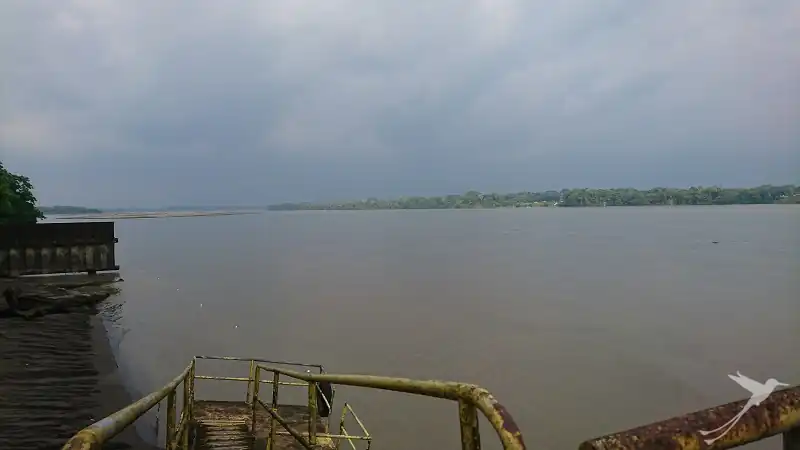
After some searching, I finally found the museum and also someone who opened up and gave me a little tour. The museum, together with the local school, is run by missionaries from the mountain region. I was surprised to find a small but very interesting museum in the middle of nowhere. The museum focuses on the various indigenous cultures of the rainforest region and the conflict with the oil companies.
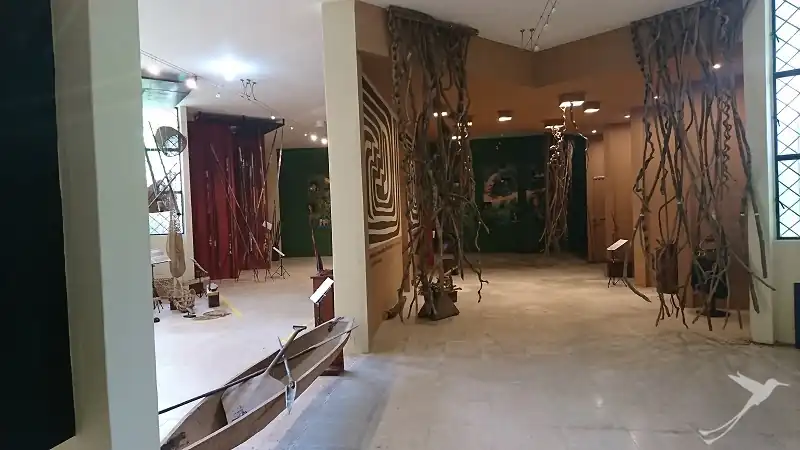
After visiting the museum and conversing with the missionary for a while, I drove back to Limoncocha and was excited about the evening tour. This time there were two other visitors on the boat. We drove slowly to the middle of the lagoon and watched the sunset with its impressive color spectacle in the sky and water.
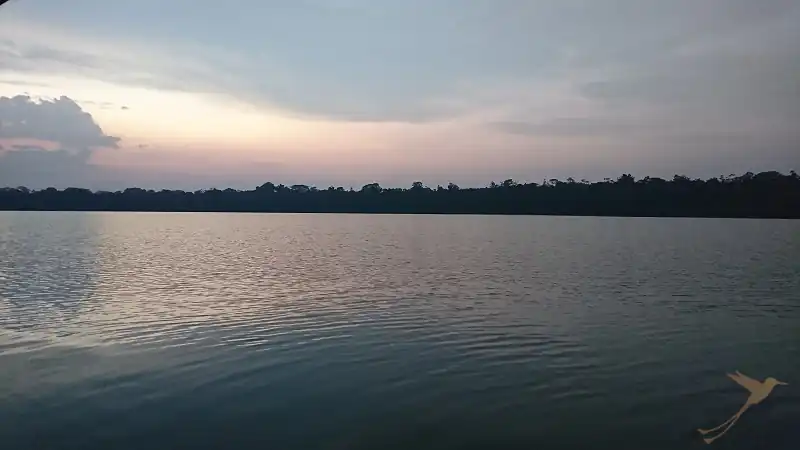
When it was almost dark, we drove back through the channel to the water lettuce, where a unique sight awaited us: it was covered all over with glowing dots. Our guide explained to us that larvae live in the leaves and produce this glow. There were also some glowworms dancing in the background and, together with the sounds of the rainforest, it was an absolutely magical situation. We took another moment to let the magic work its wonders on us. We slowly drove back towards the dock, keeping an eye out for caimans with the help of a powerful flashlight. The lagoon is known for its large population of caiman negro, the black caiman. Eventually we spotted one, or to be more precise, just its head, lying quietly in the water and not being disturbed by us at all. After this experience, we drove back and, happy and full of new impressions, I spent the night in my accommodation in the village. The next day I left the rainforest region, as always, with the intention of coming back next time and discovering something new.
Would you also like to explore the Ecuadorian rainforest? We offer various programs in this impressive region, which you can plan either separately or as part of a complete Ecuador trip. We will be happy to assist you.







